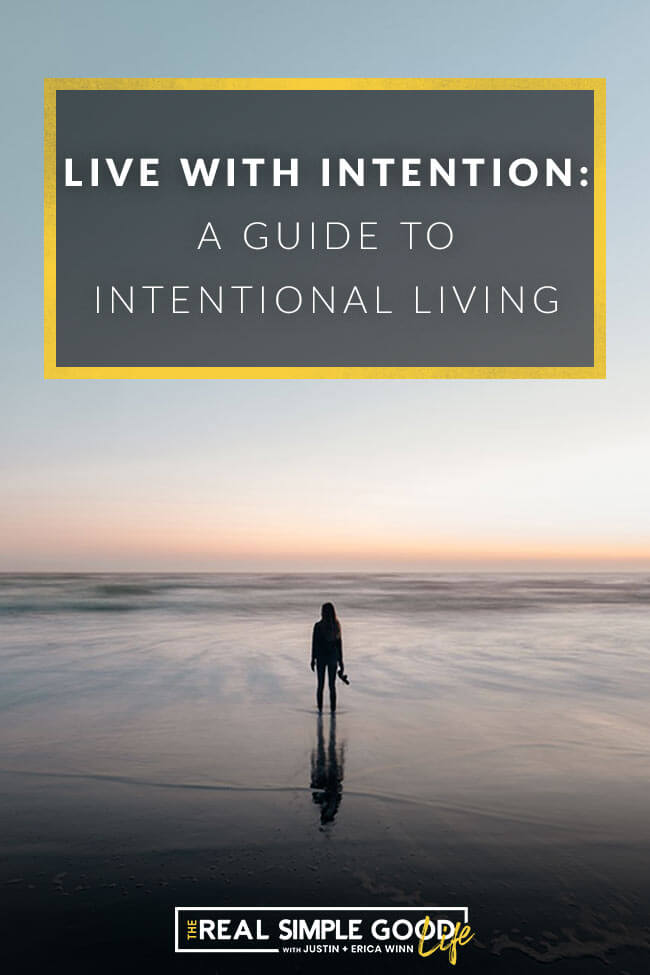Live With Intention: A Guide to Intentional Living
We all want to live with intention and on our own terms, but a lot of our days are stuck on autopilot. It’s easier to go through the motions and let external events or people control our day than to set intentions and follow through with them. However, by creating awareness about intentional living we can direct our own course and live a life that is true to our wants, needs, goals and desires.
Signs you are stuck on autopilot
In order to live with intention, you first need to start recognizing the signs that you’re not controlling your own life. Some of the signs are:
- You do a lot of things without thinking about them.
- Your daily routine is predictable.
- You make excuses to not try new things.
- Your default mode is scrolling through your phone.
- You say yes to everything.
- You’re not making progress on your goals.
- You feel like your life is missing something, that there is a better life to be lived.
How many of those signs do you recognize? Even if it’s only one or two you could definitely be living with more intention and taking charge of your own life and actions. Let’s get to work!

How to live with intention
Living intentionally means taking stock of where you are now (mentally, physically, and emotionally). It also means being honest and accepting with yourself. You have to ask yourself the hard question – what is it I truly want with my life?
1. Decide what is important to you
The first step to living with more intention is to assess what is important in your life. What exactly are your priorities and what would help you feel more fulfilled and satisfied? Where do you want to be spending your time and with whom? What are your goals and what could help you achieve them? How do you want to change your life to live better?
2. Create awareness by tracking
A simple way to change behavior and stop doing things that don’t serve your intentions is through tracking your actions. Pick a day (or better yet, a week) and track the time you spend on common autopilot/response mode time such as:
- Social media scrolling
- News (reading, watching, listening)
- Saying yes to requests for your time
- Anything else that you default to without thinking about it
Once you are aware of how much time you are spending on time-wasters (as I like to call them), you can start making more conscious decisions about where to spend your time.
3. Set goals and make a plan
Once you define what is important to you and identify where you are wasting your time, it’s time to make a plan. For example, if your intention is to spend more time with your family, what does that look like? Does that mean cooking dinner and eating it at the table? Playing catch in the yard? Taking a road trip? Get specific on how you will intentionally spend more time with your family.
Along with this plan, be sure to include a goal and plan to reduce time spent on time wasters such as social media scrolling and autopilot tasks. You are making a choice to spend time on these tasks, and living intentionally is all about recognizing your choices. Define your goals for reducing time on tasks that don’t serve your ultimate goals or purpose. Almost by default, this will increase your time living with intention.
4. Practice mindfulness and be present
A regular mindfulness practice is a great way to live with intention. Mindfulness is all about being present, being aware of yourself and being grounded. Through mindfulness, you can be more “aware” of your actions, reactions, and the choices you are making. This awareness helps you “take control” of your decisions and live more by your intentions. You can practice mindfulness in many ways, including the following:
- Meditation – Sit and focus on the breath. Notice when your mind wanders and bring it back to the breath. We like the apps Headspace or Calm.
- “Active” listening – Being fully present in the conversation. Noticing the other person’s voice, eyes, mouth, gestures.
- Mindful eating – Paying attention to all of the sensations of eating. The smells, the texture, the different tastes, the warmth.
- Walking – Really feel the sensations of walking. Observe your feet hitting the ground, feel the wind, see the trees, smell the grass, hear the birds chirping.
- Cravings – When a craving hits (whether it’s hunger or need to grab your phone), notice how you feel. What triggered the craving? Was it environmental or physical? Can you hold off? How does not satisfying the craving feel?
5. Discipline and practice
You can’t expect to make changes and live with intention right away. In order to get what you want, you have to put in the work. You will struggle, you will drift, you will fall back into old habits and autopilot mode.
That’s normal, you’re human. You’re wired for comfort.
To live with intention starts with a deliberate, conscious choice to pursue a particular course of action or direction. We have to practice deliberate intention every day or it won’t work. Just like an exercise plan, you need to stick with it and be consistent long-term to see results. Living with intention is made up of many small, conscious choices each and every day.
How are you choosing to live?
Do you want to look back on your life in 20 years and regret not living with intention? How do you want to live better? Let us know in the comments below. We want to hear about your goals and how you are working on them. Also, tag us in a post on Instagram @realsimplegood and #TheRSGLife. Make the choice today to live with intention and take control of your life!
Like this Post?
SHARE IT NOW OR PIN IT FOR LATER!






This was a great guide to living intentional. I enjoyed this read, thank you!
You’re very welcome!